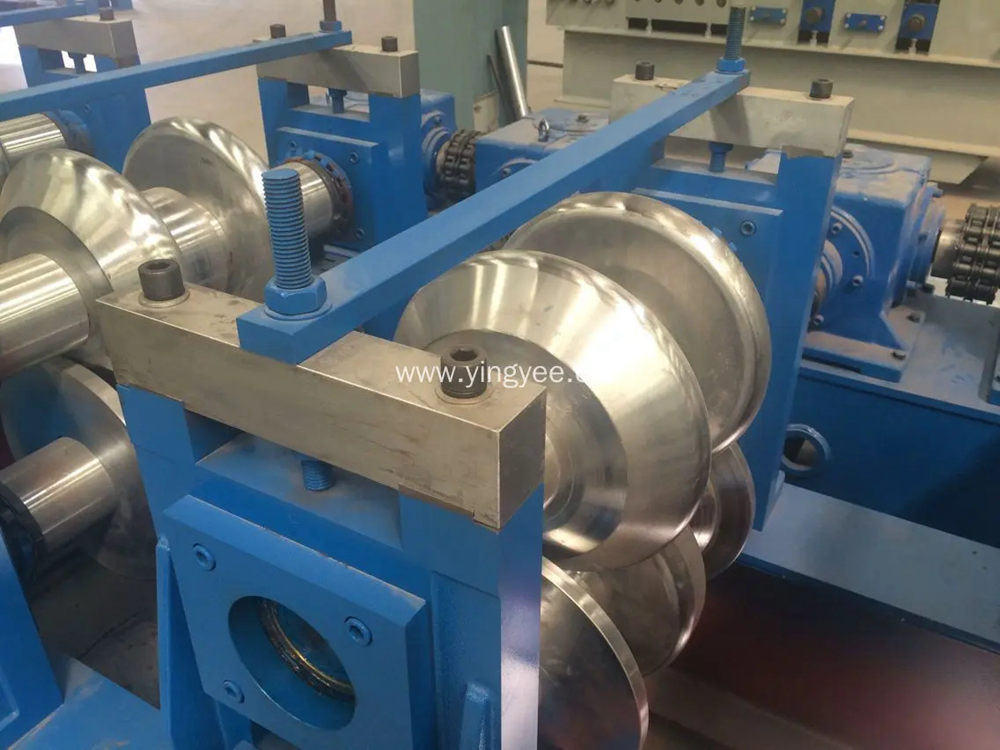
Understanding Cold Roll Formers A Revolution in Metal Processing
Cold roll forming is a highly efficient and cost-effective manufacturing process that transforms flat metal sheets or strips into complex shapes without the application of heat. This process is especially notable for its ability to produce parts with high accuracy, superior surface finish, and enhanced mechanical properties. Cold roll forming is widely used in numerous industries, including automotive, construction, and appliances, demonstrating its versatility and adaptability. This article aims to explore the principles, advantages, applications, and future of cold roll formers.
What is Cold Roll Forming?
Cold roll forming, or cold forming, involves feeding a flat metal strip through a series of rollers that incrementally shape the material into the desired cross-section. The process operates at room temperature, which allows the metal to maintain its strength and structural integrity. Cold roll forming machines are designed with multiple rollers, each performing a specific function to gradually shape the metal. This method is particularly effective for high-volume production, as it can produce uniform shapes with minimal wastage.
The Advantages of Cold Roll Forming
1. Precision and Consistency One of the most significant advantages of cold roll forming is its ability to produce highly precise and consistent components. The process allows for tolerances of ±0.005 inches, making it ideal for applications where exact specifications are critical.
2. Material Efficiency Unlike other metal forming processes that may involve cutting or machining, cold roll forming utilizes nearly the entire strip of metal. This efficiency reduces material waste, making it an eco-friendly option that conserves resources.
3. Enhanced Mechanical Properties The cold working nature of the process alters the metal’s grain structure, which can improve strength and hardness without adding weight. This property is particularly beneficial in applications requiring lightweight yet strong components.
4. Flexibility in Design Cold roll forming supports complex shapes and profiles that would be difficult to achieve with other methods. This flexibility allows engineers to design parts that meet specific performance criteria and aesthetic demands.

5. Cost-Effectiveness Although the initial setup cost for a cold roll forming operation can be high, the long-term savings from reduced material waste, reduced labor costs, and high production rates make it a cost-effective solution for mass production.
Applications of Cold Roll Forming
Cold roll forming is employed in a variety of industries due to its versatility. Some common applications include
- Construction Steel sections, such as C-channels, Z-girts, and corner beads, are often produced for structural applications in buildings and bridges. - Automotive Components like brackets, frames, and chassis parts are roll-formed to ensure strength and durability while minimizing weight. - Electronics Housings and brackets for electronic devices are produced to provide both protection and aesthetic appeal. - Furniture Metal frames for furniture that require strength and style can benefit from cold roll forming. - Appliances Parts such as frames and supports in household appliances are commonly manufactured using this method due to its efficiency and precision.
The Future of Cold Roll Forming
As technology continues to advance, the future of cold roll forming looks promising. Innovations in automation, computer-aided design (CAD), and computer numerical control (CNC) are enhancing the capabilities and efficiency of roll forming processes. These advancements allow for quick adjustments in design and production, fostering greater flexibility and responsiveness to market demands.
Moreover, the growing emphasis on sustainability in manufacturing is likely to spur further interest in cold roll forming due to its material efficiency and reduced environmental impact. As industries seek to reduce their carbon footprint and improve their sustainability practices, cold roll forming stands out as a favorable option.
Conclusion
Cold roll forming is a transformative technology in metal processing that offers numerous advantages, including precision, durability, and cost-effectiveness. Its diverse applications across various industries underscore its significance in modern manufacturing. As advancements continue to emerge, cold roll forming is poised to play an even more vital role in shaping the future of metal production, driving innovation, and meeting the evolving demands of the marketplace. Whether in construction, automotive, or consumer goods, this process exemplifies the ingenuity of modern engineering.